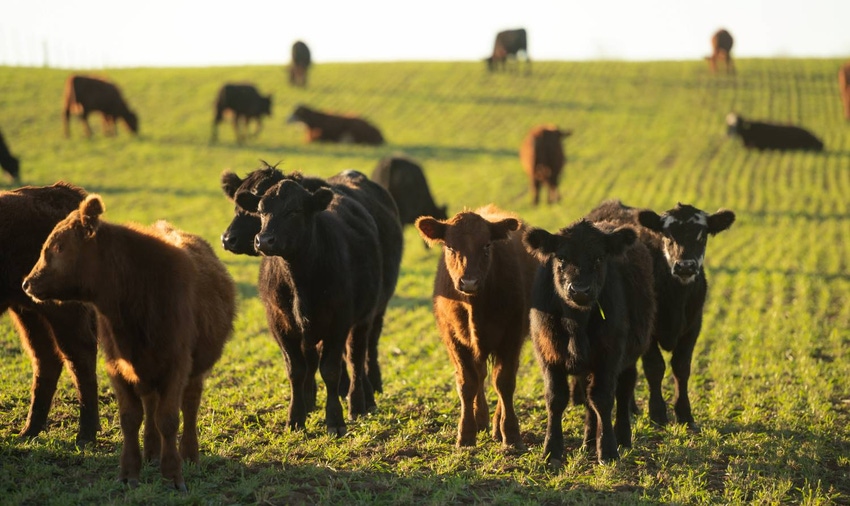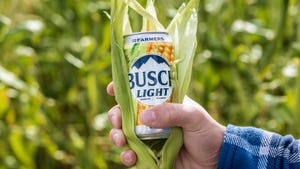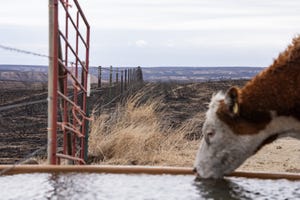Take backgrounding your calves from cookie-cutter to specifically designed
How you manage your backgrounding program can make or break sale day.
October 22, 2020

The practice of backgrounding cattle is often misunderstood. Many producers think of it as simply wintering their animals. That approach, depending on the breeding and age of the calves along with the contents of the feed cupboard, may be successful or miss the mark altogether.
But backgrounding your calves is a critical phase of growing the beef animal, says Bart Lardner, professor at the University of Saskatchewan Animal Science Department. Combined with the related markets, it can be representative of many different types of systems. “There's really not one-size-fits-all and it's important a producer has a target goal connected to a target weight. It’s never a cookie-cutter situation,” he says.
“In a nutshell, backgrounding is basically taking that weaned calf at five months of age and growing it out for 120 to 150 days. We're trying to grow out the skeleton of the animal to meet its genetic potential skeletally, and then move it from that system into a finishing program.”
He believes it depends largely on the genetic makeup of the cattle involved. British crossbreds such as commercial Herefords and Angus will fit well into a backgrounding regiment. In the prescribed number of days, they can reach a gain of approximately 1.5 to 2 pounds per day, then walk directly into a finishing lot to hit desired premiums.
For larger framed Continental breeds such as Charolais, Simmental and Limousin, timelines can often be condensed. These body types should move into a finishing yard quicker, as holding them back with a reduced average daily gain will have them reaching weights too heavy for the top prices.
Identifying two major processes
Lardner identifies two major backgrounding processes: intensive or confined and extensive or field based. Operators using either system must be mindful of all connected costs including purchase, transportation, labor, mechanical, infrastructure and feed.
The intensive, confined or traditional dry-lot process has been used by the majority of producers for years. Calves are weaned directly into a pen facility and placed on a high forage diet.
“For this type of management, the diet should be a high forage, lower concentrate—maybe an 80:20 or 75:25 ratio. This will allow the calves to grow slowly at the pounds per day needed. It will cheapen up the feed cost as well by having higher amounts of forage in the diet,” Lardner says.
The extensive or field-based process is on the opposite end of the spectrum and might include swath, crop residue or stubble grazing. These systems generally provide a lower cost of gain but often represent an unknown feed source.
Lardner urges producers to complete testing to understand the nutrient quality the calves will be accessing. It’s vital to meet the protein, energy and density requirements for the targeted gain.
Enforcing the other ingredients
Whether an intensive or extensive system is used, vitamins, minerals and salts should never be ignored. They are crucial for both confined or field-based operations no matter the calf’s age.
“A good trace mineral program is extremely important because these animals may not be getting adequate supplies from the different feedstuffs.” Macro minerals such as calcium, magnesium and phosphorus need balancing at a rate of 2:1 and greater and micro minerals such as copper, zinc, manganese, selenium and cobalt should also be represented.
Vitamins A & D are essential, and E can also be helpful for short-term stress when calves are comingled and transported at weaning. It has similarly been beneficial if selenium deficiency is a possibility.
Vaccinations are also critical. Lardner suggests working with a local veterinarian who understands the area’s health challenges. Specifics are often dependent on whether calves are sourced from ranch-raised groups or comingled from numerous herds and sale barns.
Higher-risk calves will be exposed to greater bovine respiratory disease issues and vaccinations should always cover challenges such as IBR, PI3 and BVD, along with clostridial diseases. “These are typically the stressors of the weaning process, moving to a group size and interacting with other animals. It just makes sense to protect them with a robust vaccination program.”
He says another factor to consider is whether or not to use implants. While there are many strategies, it’s an individual choice to use implant technologies.
Research suggests only a quarter of producers are taking advantage of this performance-enhancing technology. “They may be leaving 20 to 25 pounds on the table if they don’t use them. They improve the efficiency of mobilization and utilization plus the absorption of the nutrients in the diet and will increase the bottom line.”
Using the available possibilities
Location and environment also play a role. Some areas and climates will support grasses and forages or products such as corn, screenings, oat hulls or dry distiller grains. He suggests operators research different possibilities and attempt to make use of more novel supplements in their diets.
“It's all about the producer’s decision. Do they want to market the animal at five months or nine or 10 months of age? And what do they have access to? Crop residue, swaths, forages, by-products, native range land or tame seeded pastures?”
Lardner believes the most crucial part of the backgrounding system should be a calculated plan. He urges producers to maintain the animals and add value for their own operation, not lose it to the next owner.
“Don’t just background for the weekly price at the auction sale barn. Ask and answer the important questions. Is the system intensive or extensive? What is the potential diet? What’s the market?”
By understanding and acting on these questions and their subsequent answers, producers can capture the largest value possible.
Derksen is a freelance writer and feedyard pen rider in Lacombe, Alberta, Canada
You May Also Like

.png?width=300&auto=webp&quality=80&disable=upscale)

